What makes the 2025 Volvo EX30, in rear-wheel-drive form with a projected range rating of 275 miles, possible at its remarkable starting price of around $35,000—the price that tripped up Tesla some years ago?
It’s undoubtedly the EX30’s manufacture in China, where labor costs are roughly akin to those in Mexico.
The EX30 isn’t the first volume EV to be imported to North America from China; that was the Polestar 2 from Volvo’s sister company under the Geely umbrella. Nor is it the first Volvo imported from China; that was the S60 sedan. But it is the first of what may become a wave of cheap Chinese EVs, some of them with corporate ties to established Western brands.
With the impending pause of the Chevrolet Bolt EV and Bolt EUV, only the Hyundai Kona Electric and Kia Niro EV will carry starting prices similar to the EX30—and they’re hardly from brands with the premium cachet of Volvo.

2025 Volvo EX30
EX30 battery and range
The EX30’s 69-kilowatt-hour battery is large for a small electric SUV, and it helps allow the AWD version’s swift acceleration of 3.4 seconds from 0 to 60 mph. Other markets will get the option of a smaller 51.0-kwh battery using lithium-iron-phosphate cells, which are cheaper to make but less energy-dense.
That smaller battery likely produced an EPA range rating below 200 miles, making it a non-starter for the U.S. market. So both the RWD and AWD EX30s sold in North America, with their expected 275- and 260-mile ratings, will get the larger pack for that alluring base price.
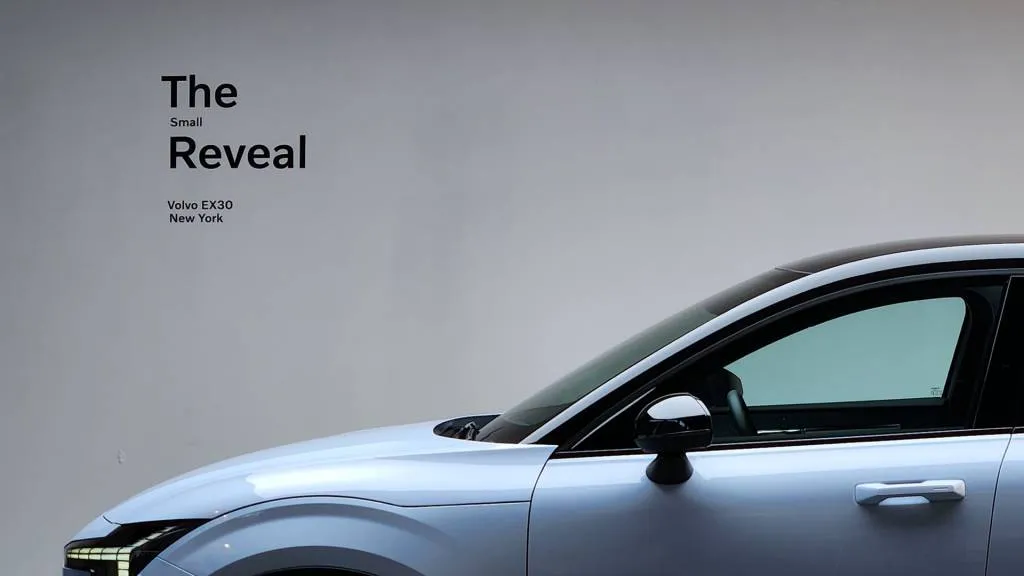
2025 Volvo EX30
Volvo taps into China
The remarkable thing is that its $34,950 sticker price (not including the mandatory $1,095 delivery fee) incorporates the current 27.5% U.S. import duty on motor vehicles imported from that country. That suggests the EX30 might be priced as low as $27,400 before the tariff.
Helping with economies of scale, the EX30 shares underpinnings known as the SEA platform with numerous other EVs built and planned by Volvo’s parent, the Chinese company Geely. Vehicles on the SEA underpinnings will be sold under brands that include not only Volvo, but also Polestar, Lotus, Smart, and Zeekr. That makes the EX30 the brand’s first model not on the Volvo-designed platforms used for the XC40 and C40 Recharge models (SPA) and the new EX90 (SPA2), which will be built at Volvo’s U.S. plant in Ridgeville, South Carolina.
At a launch event in New York City last week, Volvo executives largely waved away the issue of Chinese manufacture, saying the company builds cars in multiple countries: Sweden, Belgium, China, and soon the U.S., and allocates production where it makes sense. The brand’s ownership by a Chinese company was never mentioned.
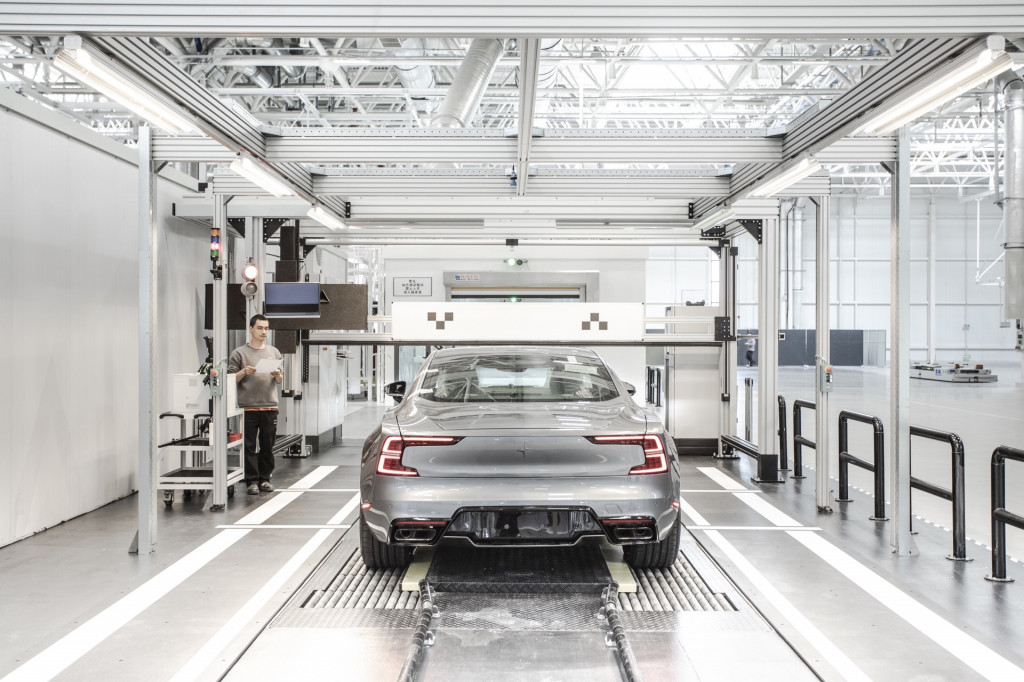
Polestar production facility and customer experience center – Chengdu, China
The intent of the EV battery-manufacturing and purchase incentives in the 2023 Inflation Reduction Act were to ensure the U.S. does not become reliant on China or certain other adversary nations for battery minerals, processing, or EV purchases.
But China has spent almost 10 years systematically gaining control over many of those minerals and the vast majority of the global processing capability to turn them into battery-cell precursor compounds. It has used a combination of carrots and sticks to push its domestic market, the world’s largest, toward EV purchases—helped by the global allure of the Tesla brand.
China is now by far the world’s largest market for EVs, both in absolute sales (5 million units) and market share (25% last year, up from 5% in 2019).
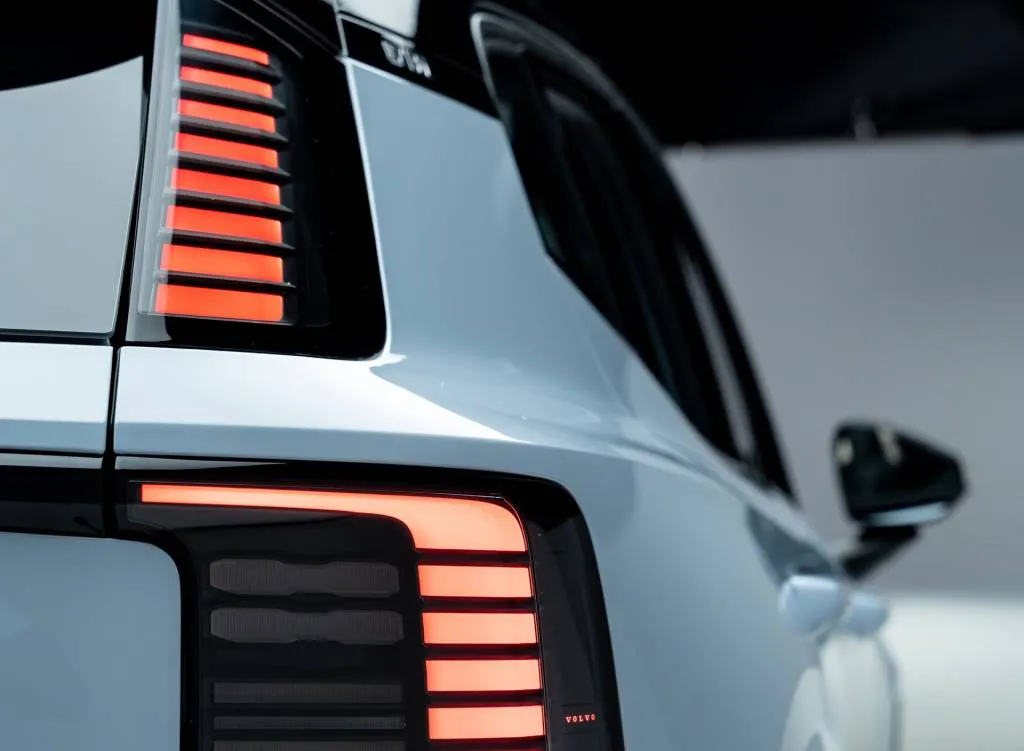
2025 Volvo EX30
Few stepped up for affordable EVs, so China will
China fully intends to take over the global market for electric vehicles, by providing what other makers haven’t yet or can’t: EVs at affordable prices, built in high volumes. And without much stretch of the imagination, Volvo and its reputation can be seen as an ambassador.
While launching a new auto brand in the U.S. market has been estimated to cost $1 billion, requiring $100 million in marketing for 10 successive years, the idea of a Chinese-built EV sold by a known, trusted brand with its roots in Europe is likely a very smart way to get a quick foothold in what is still the world’s second-largest auto market.
Volvo executives didn’t give numbers on the projected EX30 sales, but they said their biggest challenge will be to get sufficient U.S. volumes of the car, which is eagerly sought in multiple markets. They did say they expect sales to be “substantial,” which could mean the EX30 has some chance of becoming the single highest-volume Volvo model in the U.S.
They also noted that while EX30 purchases don’t qualify for the $7,500 federal tax incentive, EX30 leases still do—meaning dealers willing to walk buyers through what may well be their first leased car can still offer an effective price considerably below $30,000.
To summarize: The new template for affordable Chinese EVs might offset the U.S. tariff about $7,500 ($27.5%), with a U.S. credit incentivizing leased vehicles at up to $7,500, or in this case about $5,250 (15%).
Finally, instead of having to launch a new vehicle brand at that cost of $1 billion, the affordable Chinese EV comes in with a familiar, trusted logo on the hood. It’s worth noting that both Buick (with the Envision) and Lincoln (with the redesigned Nautilus) already sell Chinese-built gasoline vehicles. Will EVs follow in their footsteps? Neither brand will discuss its future product plans, but it hardly seems a stretch.
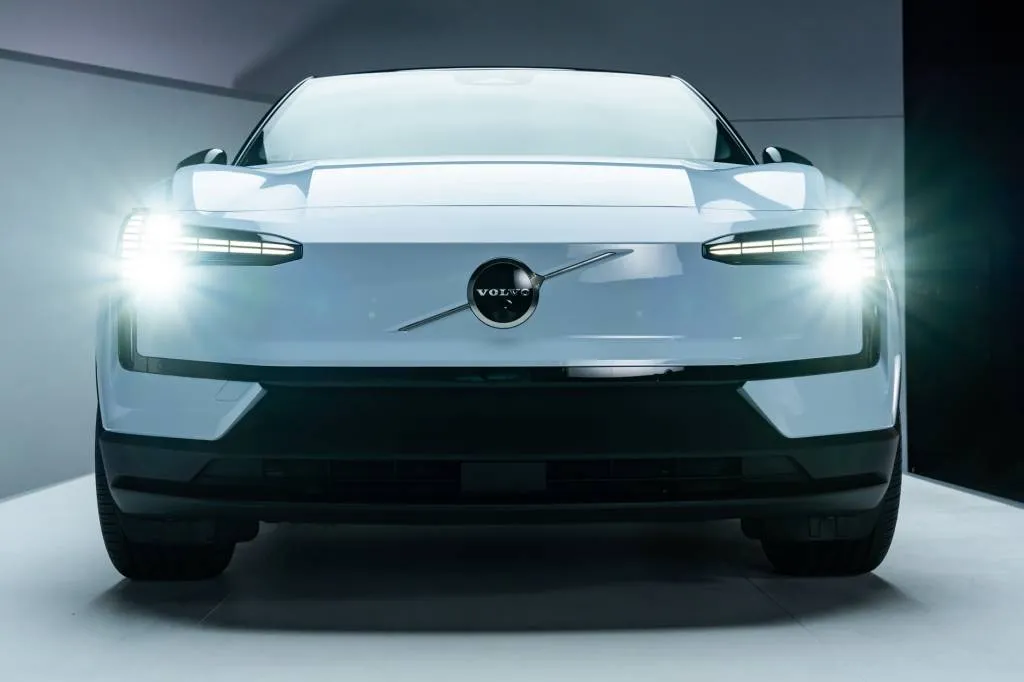
2025 Volvo EX30
A Volvo first impression
David Mele, Volvo’s EX30 product manager for North America, said the price had generated huge interest in the car among U.S. shoppers interested in investigating an electric car. Importantly for the brand, a higher proportion of those inquiries came from shoppers who’d not previously owned a Volvo. That’s been the case in Europe, too.
Up close, the 2025 Volvo EX30 proves to be both very much a Volvo and a major departure for the Swedish premium-car firm known for safety. It’s a Volvo in its styling, its array of passive and active safety features, and its emphasis on sustainability—not only in the carbon footprint of its manufacturing and materials, but in its battery-electric drivetrain. Jumping ahead of the larger, U.S.-built EX90 due to a delay, it will be the third fully electric Volvo to be offered for sale in the U.S. after the XC40 Recharge and C40, both compact SUVs.
The EX30 is also a departure because it’s the smallest Volvo offered in North America since the C30 three-door coupe sold from 2006 through 2013. The company’s designers have done their utmost to make the EX30 appear substantial, and they’ve largely succeeded. But its subcompact length of 166.7 inches will be apparent in showrooms, when it sits next to the XC40—which is 8 inches longer, 4 inches taller, and 3 inches wider.

2025 Volvo EX30
Volvo EX30 design departures
After a summary of the EX30’s features, Volvo product executives pulled off the satin sheet to give reporters time to inspect, photograph, and climb in and out of the model on display. The exterior design is every bit a modern Volvo, with a smoother and more beveled front treatment that makes no pretense at alluding to the grille of a gasoline model.
The brand’s “ironmark” logo is still centered, but the “Thor’s Hammer” light shape is made up of rectangular elements that give the EX30 an almost video-game look when lit. Rear lights take the C40’s design, with C and reverse-C shapes connected by horizontal lines, plus vertical lights flanking the tailgate rear window. Exaggerated wheel arches and large wheels combined with a black roof on the display car to underscore the EX30’s essential wagon shape, though it’s really a tall hatchback, since there’s no separate third side window aft of the rear door.

2025 Volvo EX30
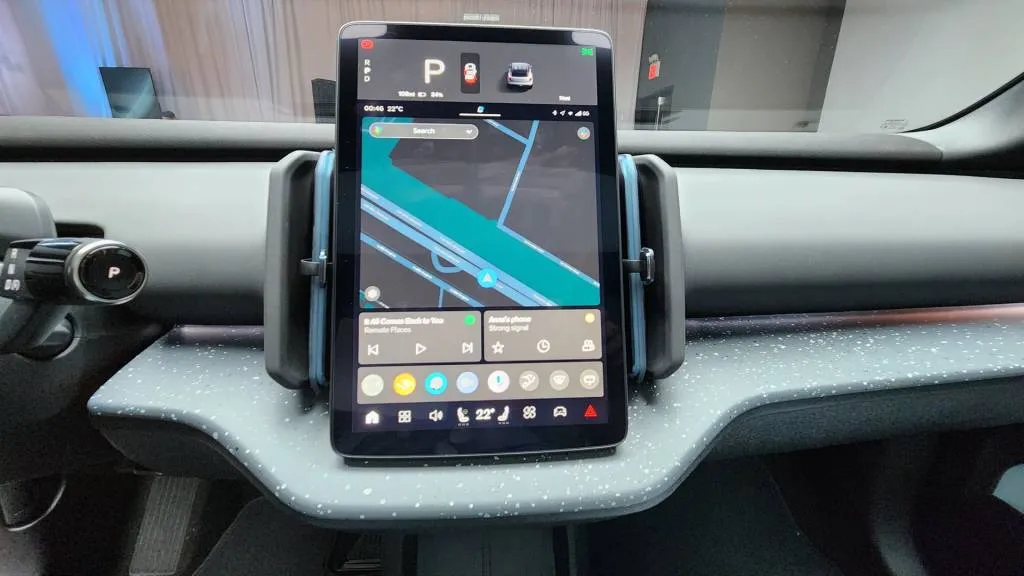
2025 Volvo EX30

2025 Volvo EX30
Inside, departures from the brand’s larger and more luxurious models are more apparent. The dash has a single, vertical 12.3-inch center touchscreen, with no separate gauge cluster behind the steering wheel for the driver. Like the Tesla Model 3 and Model X, which use a similar setup, speed and remaining range are shown on the upper part of the center screen, closest to the driver’s line of sight.
The dash itself is designed to give the cabin a wide feel, with a flat horizontal surface flanked by vertical air vents at its ends, plus one more on either side of the center touchscreen. The gray plastic material has irregular splotches on it, almost like paint spots—an effect that Lisa Reeves, Volvo’s head of interior design, said was inspired by materials used in currently fashionable running shoes.
Four interior “themes” are offered—Breeze, Mist, Pine, and Indigo—with a strong emphasis on renewable and recycled materials. Leather is not offered, and both the fabrics and some of the colors are less reserved than in larger, pricier Volvos. Among the four interior options, the most luxurious feel comes from seats in a woven wool blend; other options include Nordico, a smooth plastic with recycled content, paired with various woven textures or the wool blend.
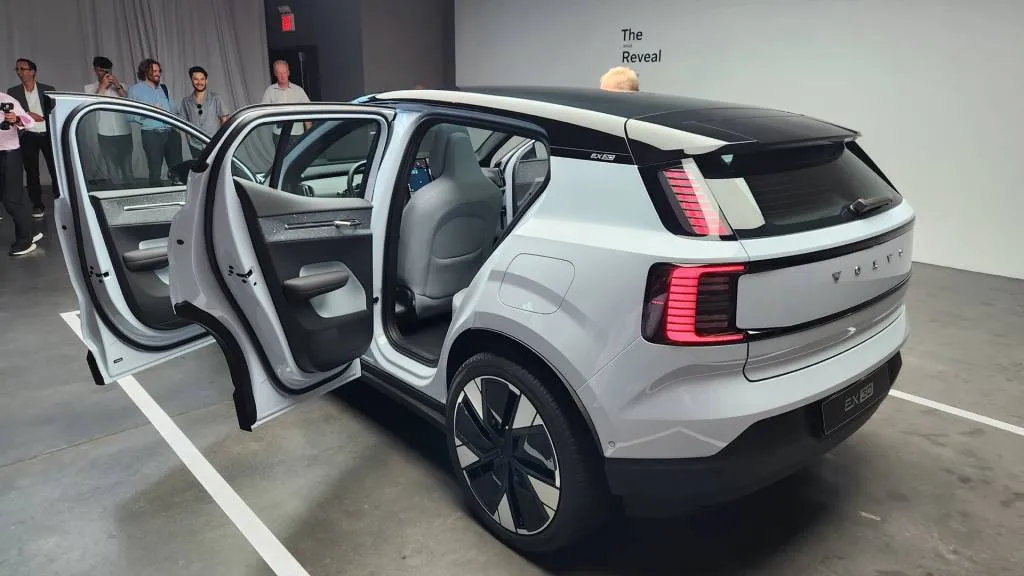
2025 Volvo EX30
Volvo EX30 interior: Comfortable. For two.
The front seats are comfortable, with power adjustment on the driver’s side, and the rear doors open wide, almost to 90 degrees. That’s a good thing, because the EX30’s subcompact size means the rear seat is cramped—even with the front seats moved forward. At 5’11”, I could only barely sit behind myself, and I keep the driver’s seat higher and more forward than many other drivers. The rear-seat lower cushion is low, to allow sufficient headroom, and canted backward at a noticeable angle. This is fundamentally a two-adult vehicle, though it’d be fine for a family with one or two pre-teen children. (We didn’t have a chance to see how well child seats fit.)
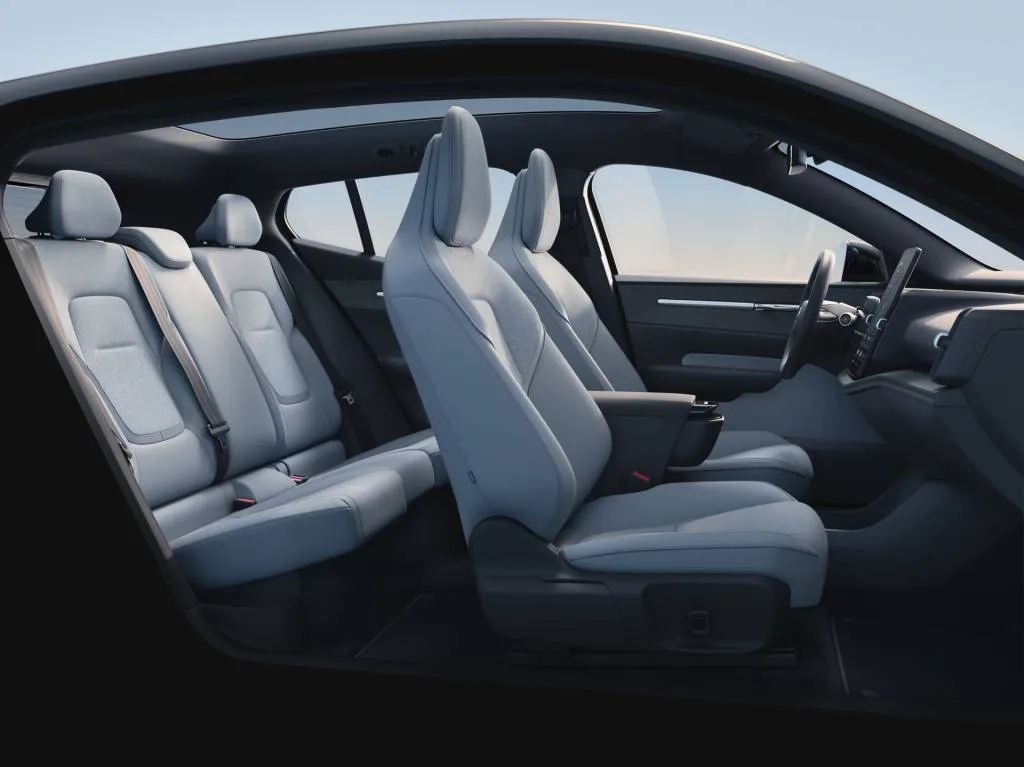
2025 Volvo EX30
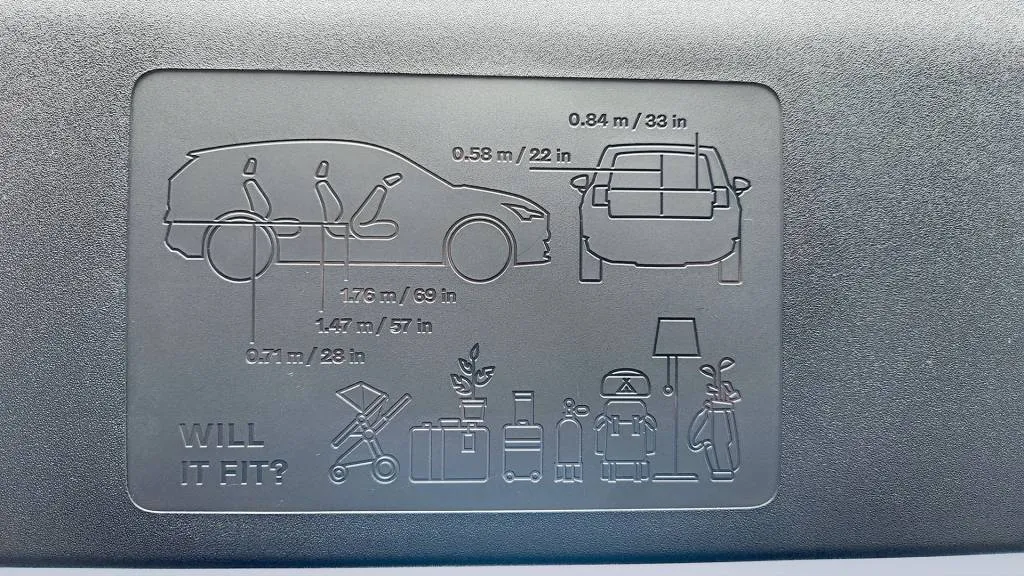
2025 Volvo EX30

2025 Volvo EX30
Volvo has built in some clever storage solutions, from a removable center-console bin accessible from both rows of seats to small floor trays outboard of the rear seat cushion. It’s also added a few Easter eggs, from the “Will It Fit?” graphic inside the load bay to an outline of a moose to underscore the car’s Scandinavian heritage. (His name, Mele solemnly informed us, is Morton.)
Overall, the interior is simple; whether it feels cheap depends on whether shoppers view its plastics and woven seat textures as advanced design with sustainable materials, or evidence of cost-cutting.
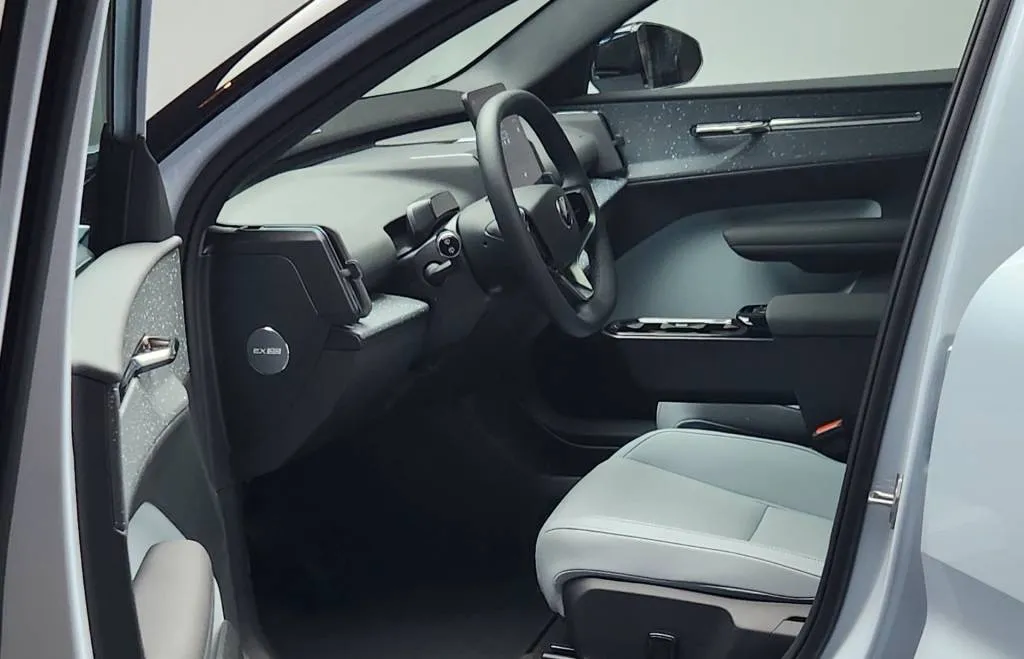
2025 Volvo EX30
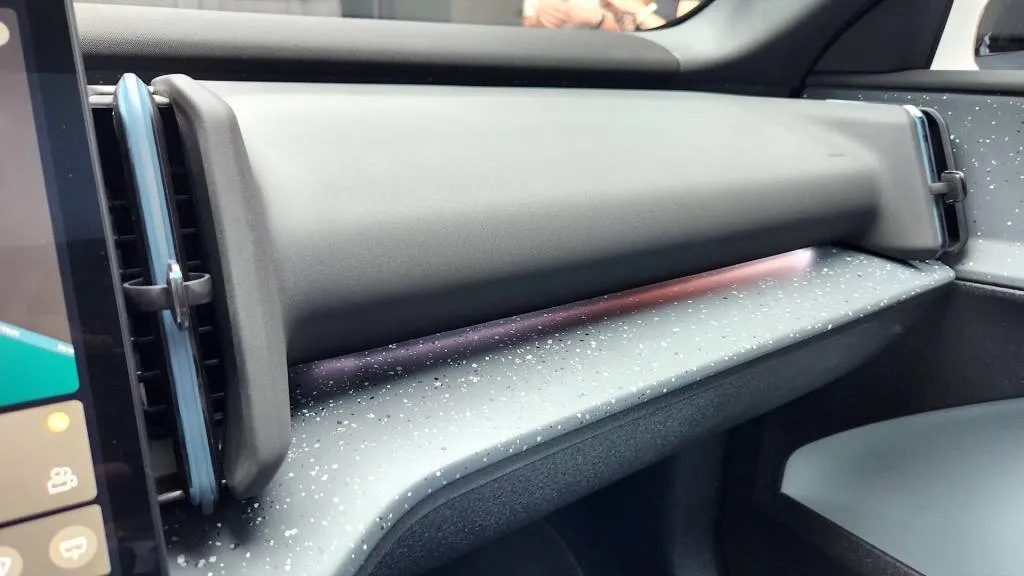
2025 Volvo EX30
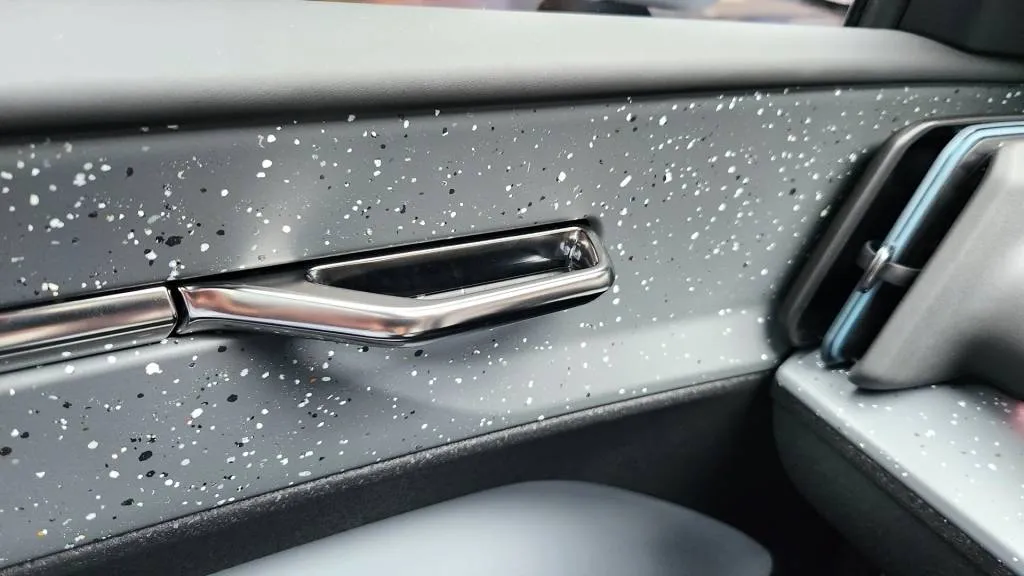
2025 Volvo EX30
EX30 emphasizes sustainability
Mele, the product manager, noted that Volvo focused heavily on every aspect of the EX30’s supply chain to reduce its carbon footprint. Steel and aluminum are heavy contributors to the CO2 embodied in the car, and Volvo was able to use 17% recycled steel and 25% recycled aluminum. Almost one-fifth of the plastic content of the car is recycled as well, he said, and interior décor uses 30% recycled materials. Even the factory it’s built in uses 100% renewable energy, Volvo says.
The EX30’s design includes other efforts to reduce parts count (and manufacturing costs as well). A sound bar across the dashboard replaces multiple speakers throughout the cabin, along with their associated wiring. Like the Volkswagen ID.4, the driver has only two electric-window switches, with a toggle to use them for the fronts or the rears. The electric-seat adjustment is a single button that moves in multiple axes to adjust the lower and back cushions independently.
Electronics embody quite a lot of CO2, so the single central touchscreen minimizes that source of carbon. It also means the same dash can be used for left-hand-drive and right-hand-drive markets, cutting complexity and eliminating the need for scores of dedicated parts for each version at the same time as lowering its carbon footprint.
Overall, Mele said, the lifetime carbon footprint of the EX30 is 25% lower than Volvo’s next-lowest battery-electric vehicle. The company, he said, will issue a full Lifecycle Carbon Analysis (LCA) before the end of the year.
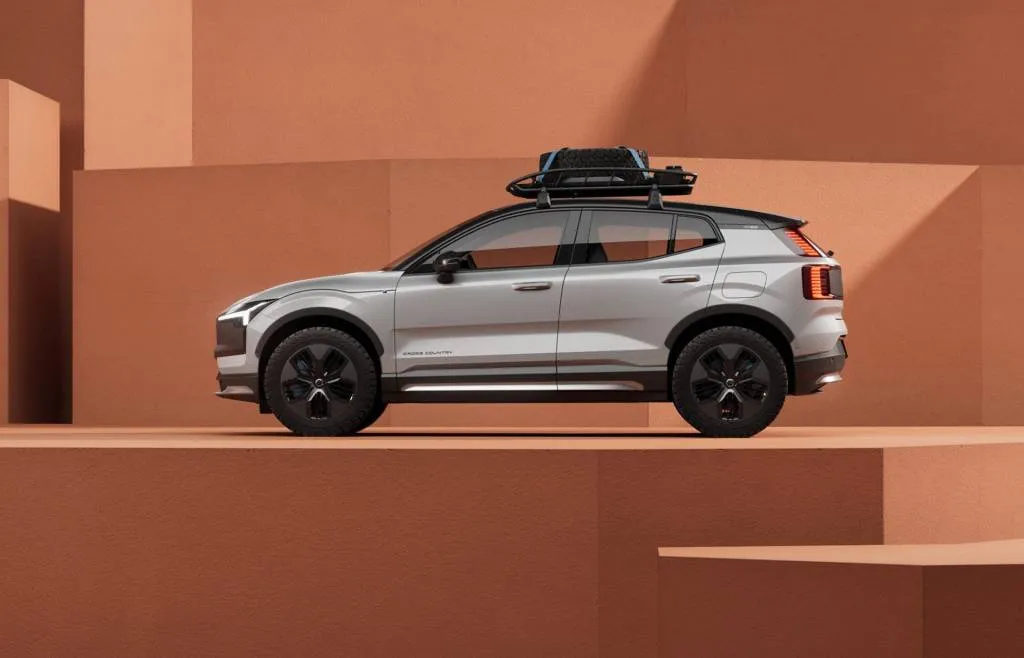
2025 Volvo EX30 Cross Country

2025 Volvo EX30 Cross Country
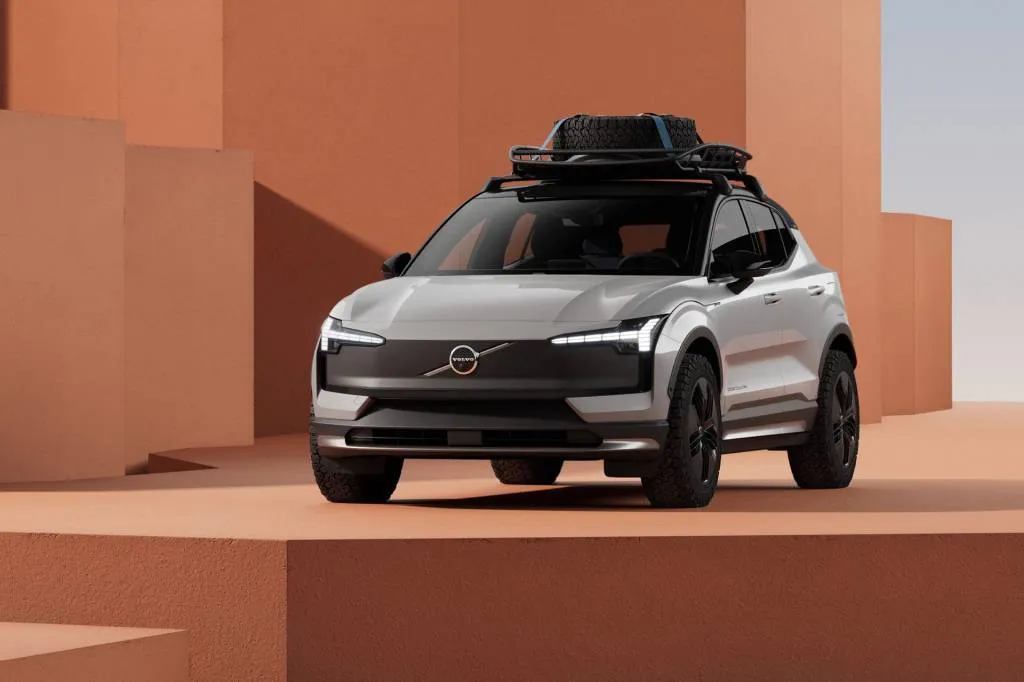
2025 Volvo EX30 Cross Country
The 2025 Volvo EX30 is projected to go on sale in summer 2024. Final specifications and pricing will be released closer to that date. An EX30 Cross Country version will follow the RWD and AWD versions.

